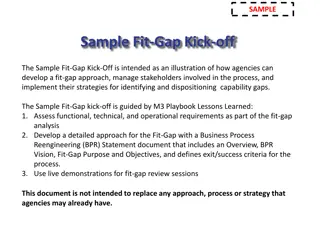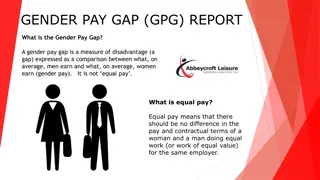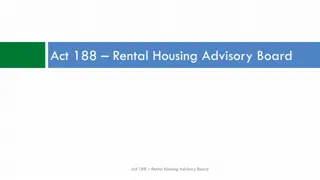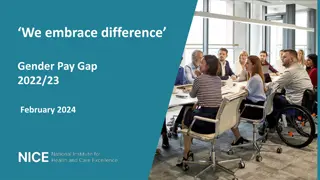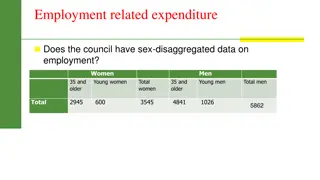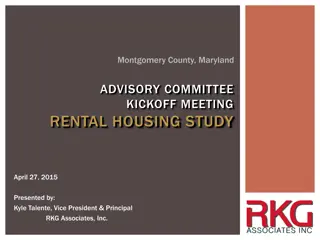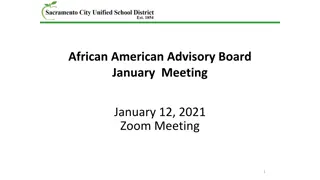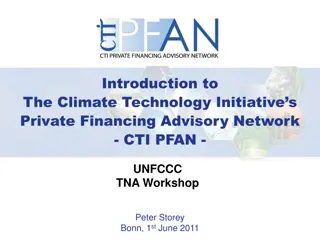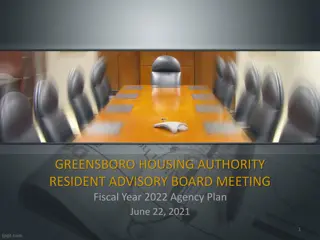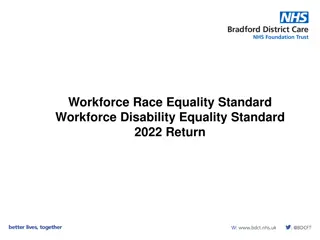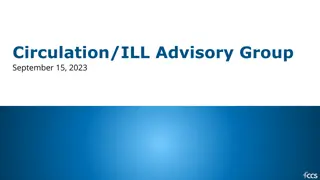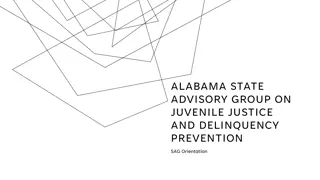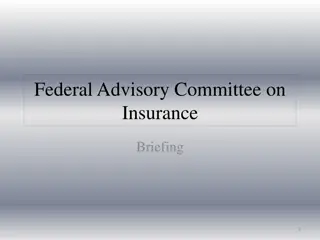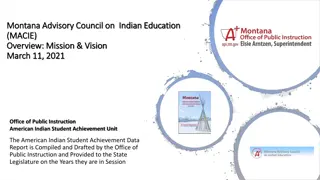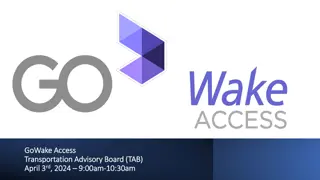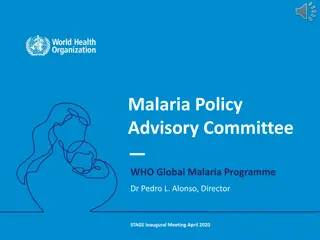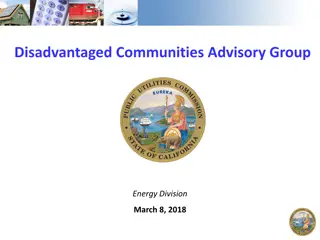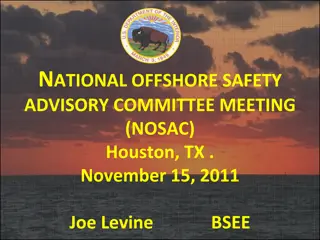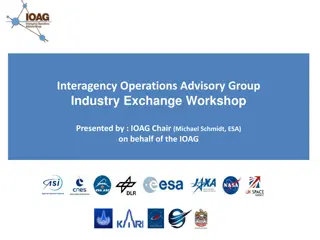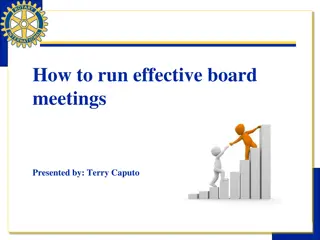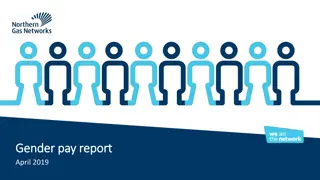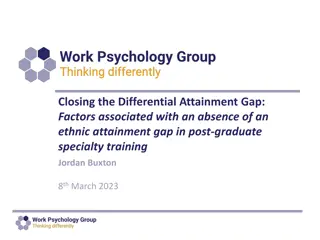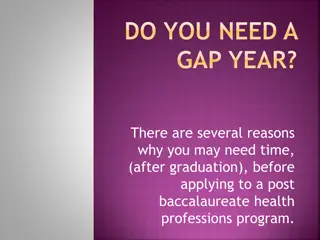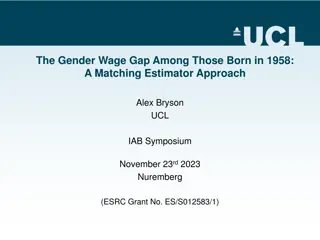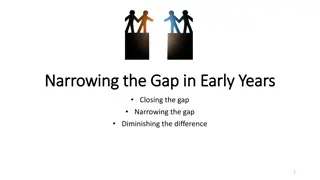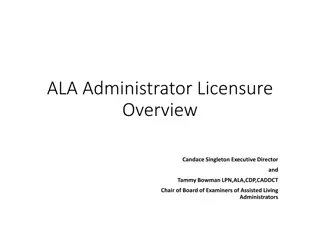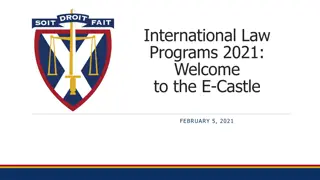Overview of Gap Analysis Conducted by International Advisory Board
The International Advisory Board conducted a gap analysis in May 2017 to evaluate the relative position of the MRA on various challenges, identify inspiring city regions, and determine ambitions. The analysis involved a pragmatic approach using benchmarks, expert input, and questionnaires to assess current standings, international positioning, and best practices. Initial findings focus on digital connectivity ambitions for Amsterdam by 2025.
Uploaded on Sep 24, 2024 | 0 Views
Download Presentation

Please find below an Image/Link to download the presentation.
The content on the website is provided AS IS for your information and personal use only. It may not be sold, licensed, or shared on other websites without obtaining consent from the author. Download presentation by click this link. If you encounter any issues during the download, it is possible that the publisher has removed the file from their server.
E N D
Presentation Transcript
Gap-analysis International Advisory Board First results and conclusions May 2017
Contents 1. The reasons for doing a gap -analysis and its value for the work of the IAB 2. Conducting the gap -analysis The need for a pragmatic approach Using information from benchmarks and other reports Using expert judgements obtained using questionnaires 3. Where do we stand on the challenges? The relative position of the MRA compared to other city regions The gap between the actual position of the MRA on the challenges and the formulated ambition City regions that seem to be inspiring examples for the MRA on specific challenges 4. Some first conclusions 5. How to proceed Appendix 1 - Measuring the gap : some methodological issues
The reasons for doing a gap-analysis and its value for the work of the IAB The wish of the Board organisation is to come to a more evidence based approach The desire of the IAB to obtain more insight into the relative position of the MRA on the 5 challenges and on the gap between the actual position of the MRA on the challenges and the formulated ambition The desire of the IAB to obtain more insight into what city regions are the most inspiring examples and why they are inspiring
Conducting the gap-analysis What did we do? We chose a pragmatic approach We collected information from benchmarks and other reports We asked for input from experts (members of the IAB, business connectors and others) using questionnaires We sketched where we stand: What are the formulated ambitions? Where do we stand? What is our international position? What are inspiring examples and proven successes (best practices) from other city regions? What emergent practices are worth exploring in the context of the five urban challenges?
Some first findings: where do we stand on the challenges?
Digital connectivity our ambitions By 2025 the AMA will be: Europe s premier location for data-driven innovation An international frontrunner in terms of the available digital infrastructure and the ability to build innovative data-driven applications using this infrastructure, as well as in terms of public trust in a digital society More specifically: By 2025 Amsterdam should be Europe s premier digital port and the undisputed central hub of the internet We will celebrate the first anniversary of digital citizens rights in 2025 In 2025, the AMA will have made substantial progress in the areas of health, mobility and circular economy thanks to the sharing of trusted data
Digital connectivity - where we stand In terms of business Amsterdam is leading internationally. In terms of government policy Amsterdam is average or even lagging behind. The government isn t fully aware of the potential that we have (Eric Boonstra, Evoswitch) PWC s Cities of Opportunity #13 (out of 30) in terms of Digital security #10 (out of 30) in terms of Broadband quality Nesta CITIE report #1 (Tier 1 performer) as a city facilitating physical and digital connectivity Other regions seem to be more aware of the vital importance of a symmetric future proof communication infrastructure (Frans-Anton Vermast, Smart city expert) European Digital City Index 2016 #3 (out of 60) in terms of digital startups #5 (out of 60) in terms of digital scale-ups #13 (out of 60) in terms of digital infrastructure: as points for attention are mentioned the cost of broadband, fibre internet* what does this mean? The Netherlands is one of the biggest data hubs in the world and the focus point lies in the AMA. This makes AMA a magnet for FDI in data hubs. To accommodate further growth challenges need to be addressed on short notice (Stijn Grove, Dutch Datacentre Association)
Digital connectivity - best practices Top-ranked cities in PWC Cities of Opportunity Report In terms of broadband quality #1 Hong Kong # 2 Singapore # 3 Seoul Top-ranked cities in the European Digital City Index 2016 #1 Bucharest #2 Vilnius #3 Riga In terms of digital security #1 Tokyo #2 - Singapore #3 New York Digital connectivity initiatives of interest In Barcelona and Estonia interesting projects have been launched focusing on trust in digital life Dublin, Stockholm and Helsinki are inspiring cities in terms of using public data to address societal challenges
Circular Economy - our ambitions By 2025 the AMA will: be a global frontrunner in finding smart solutions to limited resource availability be recognized as pioneers in the redesign and closing of energy, water, and material cycles. This will allow us to realise innovation and new business development throughout the region More specifically, the AMA will have: high value recycling of resource flows and more tailored initiatives for circular building and demolition; high-value recycling of vegetable, fruit and garden waste; a fibre unravelling installation for non-rewearable textiles; a recycling plant for personal hygiene waste (diapers, toilet papers) systems in place that make it easier to repair products and separate waste for circular reuse made huge steps to accelerate the energy transition including the re-use of residual heat and industrial CO2 emissions, as well as improving energy efficiency in the built environment
Circular Economy - where we stand Siemens: European Green City Index PWC: Cities of Opportunity #1 in waste and land use #29 in natural disaster exposure #1 in water usage #5 in natural disaster preparedness #5 in energy consumption Nesta CITIE report Tier 2 city as customer for innovation #6 in energy efficient buildings #11 in air quality #12 in CO2 emissions The MRA is a leader in developing circular ambitions through both the great willingness in politics, business and social institutions and knowledge institutes. There is a lot of communication outside and there are many networks. What the MRA can do even better is actually making money for circular innovation and large-scale investment. Global Power Cities Index #6 in CO2 emissions #15 in percentage of waste recycled #31 in percentage of renewable energy used* -Micha Hes, Port of Amsterdam
Circular Economy - best practices Top-ranked cities in Siemens European Green City Index #1 - Copenhagen #2 - Stockholm #3 - Oslo Circular economy initiatives of interest In London, the city s Waste and Recycling Board has established a dating agency to provide interested companies with different kinds of waste for fuel or recycling In Ljubljana, the municipality created a lottery to encourage recycling. On a regular basis, a household or office recycling bin is randomly selected, and if it contains the right type of waste, a reward is provided In Vienna, the city has created the Vienna Repair Network, a group of 50 repair shops what provide discounts and financial incentives for customers who use their services.
Health - our ambitions By 2025: inhabitants of the AMA will have added two healthy years to their life-span we will be recognized as a global leader in healthy living and active aging, with inhabitants firmly in control of their own health our healthcare system will have undergone a series of innovations More specifically, the AMA will have: raised awareness about healthy food and ensured healthy food options are available to all used data and technology to create an environment that makes exercise more appealing created healthy working and living environments and personalized health solutions tailored to the needs of individuals
Health - where we stand The MRA is definitely not a headliner [in this area]. The organizations and institutions are there, there is still a lack of cooperation Traditional competition must be broken, both within business and between educational institutions and universities. Sietse Dugour, CCO of Cinnovate PWC: Cities of Opportunity #15 in health systems performance #18 in security and disease risk #31 in percentage of renewable energy used* Global Power City Index #16 in number of medical doctors per population E-health initiatives are fragmented--there are low budgets and there is no academic coordination. As a result, hardly any validation and accreditation take place and applications are not used In the field of serious games, Amsterdam has a huge advantage, but due to lack of coordination, initiatives remain small and results are far behind. EIU Safe Cities Index #13 in health security -Hans Luijckx, IJsfontein
Health - best practices Top-ranked cities in health, safety, and security in PWC Cities of Opportunity Report #1 - Tokyo #2 - Toronto #3 - Sydney Health initiatives of interest In Scotland, the Age Scotland campaign has advocated for a national strategy to tackle social isolation among older citizens and coordinate responses across social, healthcare, and transportation services. In Copenhagen, the city s data exchange has enabled the implementation of a wide range of health initiatives Boston has established an integrated health system where citizens are able to monitor their own health and connect digitally to healthcare providers from their own homes
Mobility - our ambitions By 2025: city transport in the AMA will be emission free we will be an international pioneer in smart and clean goods, services, and passenger transport More specifically, the AMA will have: advanced urban distribution with smart, clean, and demand-oriented transport of goods and passengers to their final destination in the city mobility as a Service a new take on transport that provides seamless connections throughout the entirety of a journey rather than separate modes of transport positioned itself as a leading city region in terms of intelligent transport systems (ITS) strengthened its position as a leading cycling city region and brought biking to the next level
Mobility - where we stand European Digital Cities Index #13 in train connectivity PWC: Cities of Opportunity #24 in affordability of public transit #5 in airport connectivity #11 in traffic congestion #54 in average commute time and distance #31 in percentage of renewable energy used* ADL: The future of urban mobility #3 Global Power Cities Index #11 in density of suspended particulate matter #9 in commuting convenience Sootfree #10 in best European practices for clean air in urban transport There is awareness within the civil society about what the problem with city logistics is, but we are certainly not a leader in Europe. Walther Ploos van Amstel, Hogeschool van Amsterdam
Mobility - best practices Top-ranked cities in transportation and infrastructure in PWC Cities of Opportunity Report #1 Singapore #2 Dubai #3 - Stockholm Top-ranked cities in transportation and infrastructure in ADL The future of urban mobility 2.0 #1 Hong Kong #2 - Stockholm #3 - Amsterdam Mobility initiatives of interest Stockholm s Urban Mobility Strategy takes a holistic, multi-modal view of reducing traffic congestion Singapore has developed the Smart Mobility 2030 plan, which aims to create more comprehensive and sustainable transportation throughout the region. Helsinki is a pioneer city in terms of Mobility as a Serivce (MAAS), having instituted Whim in 2016
Jobs of the future - our ambitions By 2025: The AMA will have the most adaptive labour market in Europe The AMA will be the most successful region when it comes to attracting, retaining, and deploying of Dutch and international talent More specifically, the AMA will have: an adaptive education system: prepared the education system (universities, universities of applied sciences and upper secondary vocational education) for the jobs of the future by helping them respond quickly and effectively to the changing market. attracted and taken advantage of Dutch and international talent: attracting and retaining talent, both from the Netherlands and abroad, in response to market demands and maximizing their potential for the benefit of the region. adapted to work in the future: promoted craftsmanship, paid increasing attention to ICT skills, created a more inclusive labor market, prepared employees for working in other types of organizations, and cultivated start-ups.
Jobs of the Future- where we stand European Cities of the Future index Global Power Cities Index Out of top 10 in Human capital and Lifestyle #37 out of 42 in human capital PWC: Cities of Opportunity #20 in ease of securing human resources #29 out of 30 in World University Ranking #39 in number of international schools #11 in youthful cities index #24 in number of international students Nesta CITIE report Our position is average. Point of focus is the gap between education and the labour market and the widening skill-gap. Too little attention for life long learning (Jilko Andringa Manpower Group) Tier 3 city as investor (building tech talent, support access to capital)
Jobs of the Future - best practices Top-ranked cities in City as Investor in Nesta Citie report 2015 Top-ranked cities in Ease of securing human resources in Global Power City Index 2016 Tier 1: Berlin, Boston, Chicago, Helsinki, London, New York City, Paris, San Francisco, Seattle. #1 New York #2 - London Tier 2: Barcelona, Copenhagen, Hong Kong, Los Angeles, Melbourne, Moscow, Seoul, Singapore, Sydney, Tallinn, Tel Aviv, Toronto, Vancouver, Vienna. #3 - Singapore Jobs of the Future initiatives of interest In Paris Ecole 42 is a response to a bogged down education system. The school does not have any professors, does not issue any diploma or degree, and is open 24/7. The training is inspired by new modern ways to teach which include peer-to-peer pedagogy and project-based learning. London sponsors designated technology apprenticeship schemes for young people between the ages of 16 and 23 who have few qualifications and who have not progressed to higher education. Evidence points to a strong return on investment.
Some first conclusions Measuring the gap between ambition and the actual situation on each challenge is more difficult then measuring the MRA s relative position Within each challenge there appears to be areas where AMA s relative performance is quite good and where it is quite poor Benchmarks have a blind spot for emerging new structures, cultures and technologies (which characterize societal transitions) Some inspiring cities and best practices emerged from our research
How to proceed Strengthening the evidence base Do we want to follow up on the benchmarking exercise? If so, how? Do we want to get more opinions of experts? If so, do we need to use a different approach? Do we want extra information from (some of) the experts? If so, what information? Do we think it is useful to get experts opinion yearly? Digging deeper to find inspiring examples Which (themes within the) challenges ask for our further attention? Which emerging new development, technologies and themes (that do not show up in the benchmarks yet) ask for our further attention? What cities and what examples should be looked at more closely? How do we find out whether examples from other city regions could work also in the context of the MRA?
Appendix 1 Measuring the gap : some methodological issues (1) Advantages/disadvantages of city benchmarks for gap analysis ++ Insight into the relative strengths and weaknesses of city regions (based on a set of indicators for which there exist broad international and historically comparable data) + Able to spot current high-performing cities for learning opportunities - Most benchmarks do not specifically focus on the Board challenges or do not focus on the MRA-level (but on just Amsterdam or the Netherlands as a whole) - Lack of insight in the path development of (un)successful regions -- Blind spot for emerging new structures, cultures and technologies (which characterize societal transitions) Moreover: Measuring the gap between the actual position of the MRA on the challenges and the formulated ambition is hardly possible since the road to the formulated ambitions is not a linear one, but a complex transition process (the Board challenges are not a man to the moon ambitions but rather complex solving the ghetto problem ambitions)
Appendix 1 Measuring the gap : some methodological issues (2) The city-region is a complex adaptive system, the urban challenges are complex.



